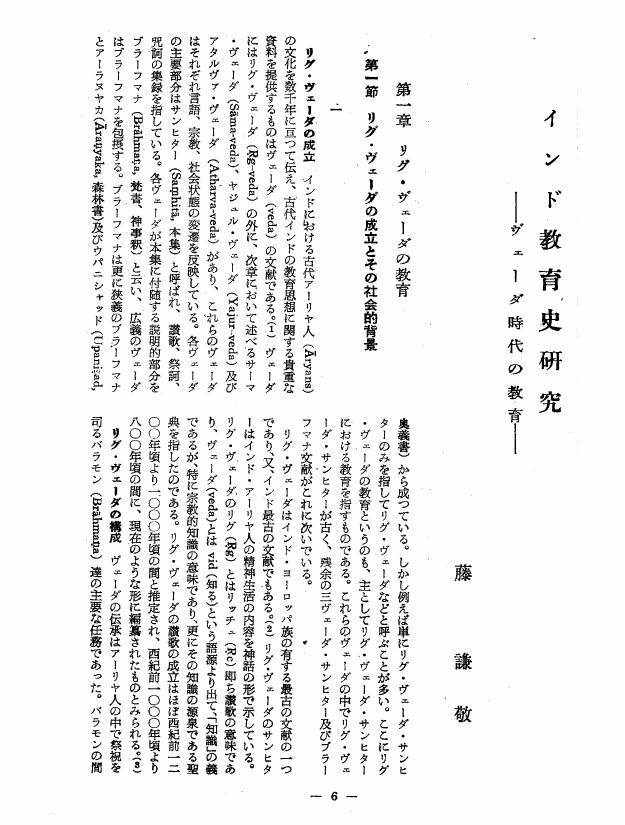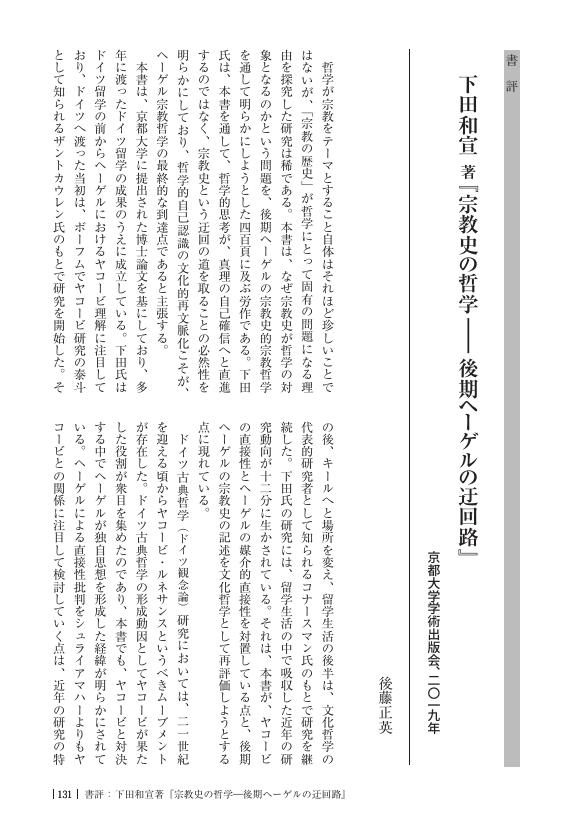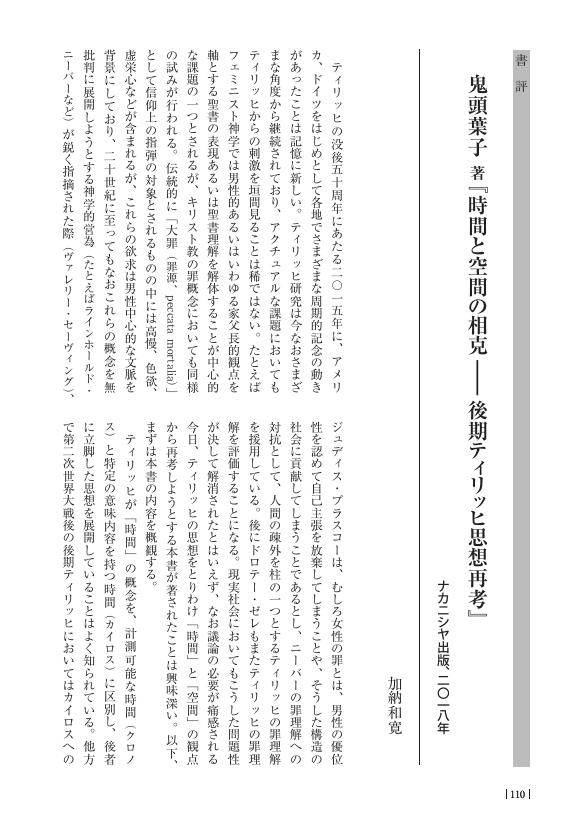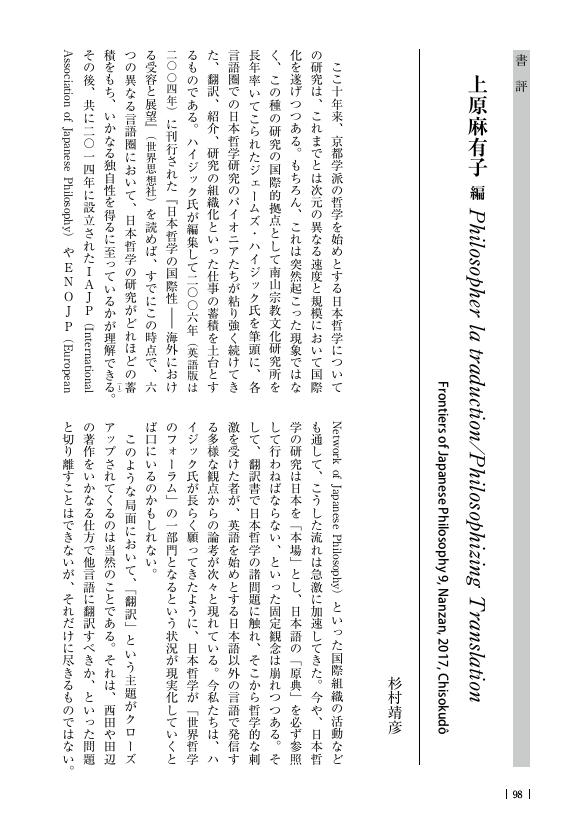- 著者
- 研究代表者 土肥昭夫
- 出版者
- [九州大学]
- 巻号頁・発行日
- 1993
1 0 0 0 OA ネワール仏教におけるカルコータカ竜王とバースキ竜王
- 著者
- 吉崎 一美
- 出版者
- 密教研究会
- 雑誌
- 密教文化 (ISSN:02869837)
- 巻号頁・発行日
- vol.1996, no.195, pp.L112-L97, 1996-12-11 (Released:2010-03-12)
- 参考文献数
- 25
1 0 0 0 OA 自己貪食空胞性ミオパチーの病態解明と治療法開発
- 著者
- 西野 一三
- 出版者
- 日本神経学会
- 雑誌
- 臨床神経学 (ISSN:0009918X)
- 巻号頁・発行日
- vol.50, no.1, pp.1-6, 2010 (Released:2010-02-08)
- 参考文献数
- 31
- 被引用文献数
- 1 2
自己貪食空胞性ミオパチー(AVM)は,筋病理学的に自己貪食空胞の出現により定義される一群の遺伝性筋疾患である.歴史的にもっとも研究が進んでいるPompe病以外に,最近2つのAVMのカテゴリーが新たに認識されつつある.一つは,Danon病を初めとする一連の筋疾患である.この筋疾患群は,特異な筋鞘膜の性質を有する自己貪食空胞(AVSF)の出現を特徴とする.AVSFでは,アセチルコリンエステラーゼをふくむ,ほぼすべての筋鞘膜蛋白質が空胞膜に発現する.Danon病はライソゾーム膜蛋白質LAMP-2の原発性欠損による.興味深いことに,本疾患におけるAVSFの数は年齢とともに増加する.AVSFミオパチーとしては,他に,最近VMA21 変異によることが明らかとなった,過剰自己貪食をともなうX連鎖性ミオパチー(XMEA)がある.もう一方のAVMは,縁取り空胞の出現を特徴とするミオパチーである.縁取り空胞は電顕的には自己貪食空胞の集塊である.もっとも良く知られた疾患として,縁取り空胞をともなう遠位型ミオパチー(DMRV)がある.本疾患は,欧米では遺伝性封入体ミオパチー(HIBM)と呼ばれる.DMRVはシアル酸生合成経路律速酵素遺伝子GNE の変異により発症する.DMRVモデルマウスにおいては,シアル酸補充療法によりほぼ完全に筋症状を抑制することができる.このことは,シアル酸低下がミオパチーの原因であることとシアル酸補充がヒトでも有効である可能性を示唆している.現時点で原因遺伝子が明らかとなっているAVSFミオパチーはともにライソゾーム機能異常を根本原因としている.一方,縁取り空胞は,DMRV/HIBMが低シアリル化を原因としているように,ライソゾーム外の異常が根本原因であり,二次的に形成されるものである.
1 0 0 0 OA インド教育史研究 ヴェーダ時代の教育
- 著者
- 藤 謙敬
- 出版者
- 一般社団法人 日本教育学会
- 雑誌
- 教育学研究 (ISSN:03873161)
- 巻号頁・発行日
- vol.24, no.1, pp.6-20, 1957-03-20 (Released:2009-01-13)
- 参考文献数
- 45
1 0 0 0 OA 血管新生における血小板由来増殖因子 (PDGF) の役割
- 著者
- Edouard J. Battegay Regula Thommen Rok Humar 浅田 眞弘 岡 修一
- 出版者
- FCCA(Forum: Carbohydrates Coming of Age)
- 雑誌
- Trends in Glycoscience and Glycotechnology (ISSN:09157352)
- 巻号頁・発行日
- vol.8, no.42, pp.231-251, 1996-07-02 (Released:2010-01-05)
- 参考文献数
- 197
- 被引用文献数
- 14 16
血管新生、すなわち既に存在する微小血管から新たな血管を形成する過程は胚発生や創傷治癒、炎症、心臓や末梢血管の虚血性疾患、心筋梗塞、糖尿病性網膜症、そして癌などにおいて重要な機能を果たしている。血小板由来増殖因子 (PDGF) はこれらの過程のほとんどに関与しており、血管網の発達した結合組織の形成を誘導する。PDGF-A鎖、-B鎖から成るPDGFのホモあるいはヘテロの二量体と、PDGFレセプターのサブユニット (α型、B型) は、組織の損傷や修復の際には広く発現される。低酸素状態などの血管新生を誘導するような刺激はPDGF-B鎖の発現を促す。PDGFは血管新生を直接制御するような炎症性のあるいは結合組織の細胞を引き寄せ、これによって間接的に血管新生を制御する。また、血管を形成しつつある内皮細胞や微小血管由来の内皮細胞は、β型PDGFレセプターを発現するという特徴ある性質を示し、PDGFはこのような細胞には直接作用する。PDGFを外から投与したり局所的に過剰発現したりすると、血管網の発達した結合組織が形成される。胎盤形成、胚形成、創傷治癒、動脈硬化、癌といった血管新生が関与する過程やその疾患の際には、PDGFとそのレセプターが発現されることからも、血管が形成される際にはPDGFが実際に機能していると考えられる。このように、PDGF-BBは血管網の発達した結合組織間質の形成を促す。PDGF-BBに応答した新たな血管の形成は、β型レセプターを発現している内皮細胞に対する直接作用によるものもある。
1 0 0 0 OA 永井晋著『〈精神的〉東洋哲学―顕現しないものの現象学』
- 著者
- 丸山 空大
- 出版者
- 宗教哲学会
- 雑誌
- 宗教哲学研究 (ISSN:02897105)
- 巻号頁・発行日
- vol.37, pp.123-126, 2020-03-31 (Released:2020-07-09)
1 0 0 0 OA 松井吉康著『存在の呪縛』
- 著者
- 神尾 和寿
- 出版者
- 宗教哲学会
- 雑誌
- 宗教哲学研究 (ISSN:02897105)
- 巻号頁・発行日
- vol.37, pp.127-130, 2020-03-31 (Released:2020-07-09)
1 0 0 0 OA 谷口静浩著『ハイデッガーの思惟と宗教への問い―宗教と言語を巡って』
- 著者
- 松本 啓二朗
- 出版者
- 宗教哲学会
- 雑誌
- 宗教哲学研究 (ISSN:02897105)
- 巻号頁・発行日
- vol.37, pp.135-138, 2020-03-31 (Released:2020-07-09)
1 0 0 0 OA 下田和宣著『宗教史の哲学―後期ヘーゲルの迂回路』
- 著者
- 後藤 正英
- 出版者
- 宗教哲学会
- 雑誌
- 宗教哲学研究 (ISSN:02897105)
- 巻号頁・発行日
- vol.37, pp.131-134, 2020-03-31 (Released:2020-07-09)
1 0 0 0 OA 丸山空大著『フランツ・ローゼンツヴァイク―生と啓示の哲学』
- 著者
- 佐藤 貴史
- 出版者
- 宗教哲学会
- 雑誌
- 宗教哲学研究 (ISSN:02897105)
- 巻号頁・発行日
- vol.37, pp.118-122, 2020-03-31 (Released:2020-07-09)
1 0 0 0 OA 澤井義次・鎌田繁編『井筒俊彦の東洋哲学』
- 著者
- 井上 克人
- 出版者
- 宗教哲学会
- 雑誌
- 宗教哲学研究 (ISSN:02897105)
- 巻号頁・発行日
- vol.37, pp.114-117, 2020-03-31 (Released:2020-07-09)
1 0 0 0 OA 鬼頭葉子著『時間と空間の相克―後期ティリッヒ思想再考』
- 著者
- 加納 和寛
- 出版者
- 宗教哲学会
- 雑誌
- 宗教哲学研究 (ISSN:02897105)
- 巻号頁・発行日
- vol.37, pp.110-113, 2020-03-31 (Released:2020-07-09)
1 0 0 0 OA 浄土教の象徴的行為 親鸞の行論を探究する
- 著者
- 杉岡 孝紀
- 出版者
- 宗教哲学会
- 雑誌
- 宗教哲学研究 (ISSN:02897105)
- 巻号頁・発行日
- vol.37, pp.1-15, 2020-03-31 (Released:2020-07-09)
Although the relationship between nembutsu (or true practice) and shinjin (or true entrusting) is said to constitute the center of Shinran Pure Land Buddhism, research from the modern period up to the present has focused mainly on studies of shinjin. In recent years, there have been attempts to elucidate Shinran’s concept of shinjin using a psychological perspective on the Buddha’s teachings, or through the application of counseling theory, and this trend is growing stronger. There are very few new understandings and interpretations of Shinran’s Buddhist thought. However, from among these, I would like to focus on a unique perspective that views Buddhist thought in Shinran Pure Land Buddhism as a symbolic act. This paper discusses the understandings of the philosopher Yoshinori Takeuchi and the Shin Buddhist scholar Ryoji Oka. Their approaches are used to clarify the characteristics of Buddhist thought based on the 17th Amida’s vow in Shinran.
1 0 0 0 OA 戦争と狂熱 動機をめぐるカントの省察およびレヴィナスの意志論を手がかりとして
- 著者
- 末永 絵里子
- 出版者
- 宗教哲学会
- 雑誌
- 宗教哲学研究 (ISSN:02897105)
- 巻号頁・発行日
- vol.37, pp.43-55, 2020-03-31 (Released:2020-07-09)
Dans sa méditation sur les mobiles de l’action, Kant mentionne l’illusion nommée « exaltation morale (moralische Schwärmerei) ». Il s’agit d’une illusion qui touche au Bien suprême, qui sert de thème capital à l’Analytique de la raison pratique et constitue la première condition du souverain Bien dont traite la Dialectique de la raison pratique. Le but de cette étude consiste à expliciter la constitution de l’« expérience de la guerre » chez Lévinas en prenant pour horizon herméneutique cette « exaltation morale ». Notre objectif final est cependant de faire de ce travail d’explicitation le point de départ d’un parcours qui nous conduira à élucider quelles sont l’« expérience de la totalité » chez Lévinas et la « pathologie de la totalité » chez Ricœur. Dans notre perspective, le symptôme de la phase terminale de cette pathologie est ce qu’on pourrait nommer une apparence perverse, tandis que son premier symptôme en est une exaltation perverse. Tout d’abord, nous traitons de la violence qui fait problème sous le régime de la guerre moderne en résumant son essence comme apparence qu’il faudrait appeler l’autonomie subjective selon l’hétéronomie objective. Ensuite, nous montrons que l’« expérience de la guerre » chez Lévinas peut être entièrement comprise à partir de l’exaltation morale chez Kant. Finalement, nous explicitons la constitution de cette illusion au travers de l’analyse de la corporéité et de la mortalité de la volonté humaine chez Lévinas qui correspond au libre-arbitre (Willkür) chez Kant.
1 0 0 0 OA 竹村牧男著『井上円了―その哲学・思想』
- 著者
- 長谷川 琢哉
- 出版者
- 宗教哲学会
- 雑誌
- 宗教哲学研究 (ISSN:02897105)
- 巻号頁・発行日
- vol.36, pp.115-119, 2019-03-30 (Released:2019-05-22)
1 0 0 0 OA 岡村康夫著『シェリング哲学の躓き―『世界時代』の構想の挫折とその超克』
- 著者
- 神尾 和寿
- 出版者
- 宗教哲学会
- 雑誌
- 宗教哲学研究 (ISSN:02897105)
- 巻号頁・発行日
- vol.36, pp.111-114, 2019 (Released:2019-05-22)
1 0 0 0 OA ウィリアム・ジェイムズにおける宗教的な経験と実在
- 著者
- 山根 秀介
- 出版者
- 宗教哲学会
- 雑誌
- 宗教哲学研究 (ISSN:02897105)
- 巻号頁・発行日
- vol.36, pp.57-70, 2019-03-30 (Released:2019-05-22)
In his Pragmatism and The Meaning of Truth, William James accounted for and developed his own theory of truth. For James, truth is the agreement of an idea with reality and this agreement has to be verified in our actual experience. From this point of view, reality means sensible experience. These notions about truth, reality and experience are not so difficult to understand as long as we deal with ordinary or scientific matters. However, are these concepts true of religious matters? Religious phenomena transcend our sensible experience, so people tend to think there is an essential difference between two kinds of experiences. In The Varieties of Religious Experience, James tries to reveal the nature of religious experience. James doesn’t think that these two experiences are completely different. He qualifies religious experience and reality as ‘quasi-sensible’, and this attitude isn’t incompatible with that of Pragmatism and The Meaning of Truth in which experience is considered to be sensible. The purpose of this paper is, by reading carefully The Varieties, to elucidate what the religious experience and reality are, focusing on what is meant by the adjective ‘quasi-sensible.’ For James, in religious experience, people are affected through their sensible experience by religious reality called ‘subliminal’ or ‘the more’, and so an individual consciousness turns out to be surrounded by the vast superhuman consciousness.
1 0 0 0 OA マルティン・ブーバーの聖書解釈 神話、悪、想像
- 著者
- 佐藤 貴史
- 出版者
- 宗教哲学会
- 雑誌
- 宗教哲学研究 (ISSN:02897105)
- 巻号頁・発行日
- vol.36, pp.71-83, 2019-03-30 (Released:2019-05-22)
This paper presents considerations on the significance of myth, evil, and imagination in the religious thought of the Jewish philosopher Martin Buber, as seen in his biblical hermeneutics. According to Claire E. Sufrin, a scholar of modern Jewish thought and theology, Buber chose the term “saga,” not “myth,” in his hermeneutics. This paper, however, clarifies that myth—not only the term but also its meaning—played an important role in Buber’s hermeneutics. In looking at Genesis, Buber took up the stories of the Tree of Knowledge and the Flood and argued that these describe in mythical form the essence of the problem of evil. This paper explains that Buber’s biblical hermeneutics was mythological to a great extent, which indicates that, contrary to Sufrin’s claim, Buber placed tremendous importance on myth. Further, according to Buber, evil was the product of human imagination, and in that sense, it had its origin not in God but in humankind. For Buber, the Bible as a myth described “the human constitution and movement of evil.” This paper clarifies that in Buber’s biblical hermeneutics, myths—especially those concerning the problem of evil—have great significance.
- 著者
- 杉村 靖彦
- 出版者
- 宗教哲学会
- 雑誌
- 宗教哲学研究 (ISSN:02897105)
- 巻号頁・発行日
- vol.36, pp.98-101, 2019-03-30 (Released:2019-05-22)











